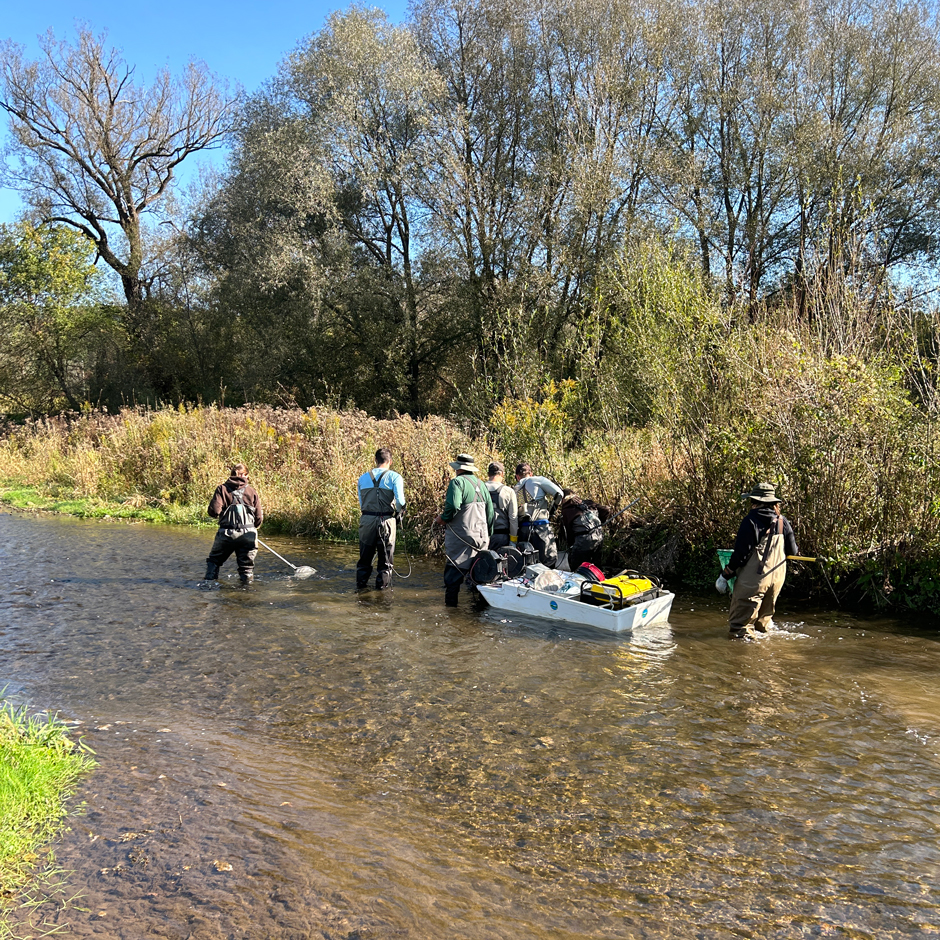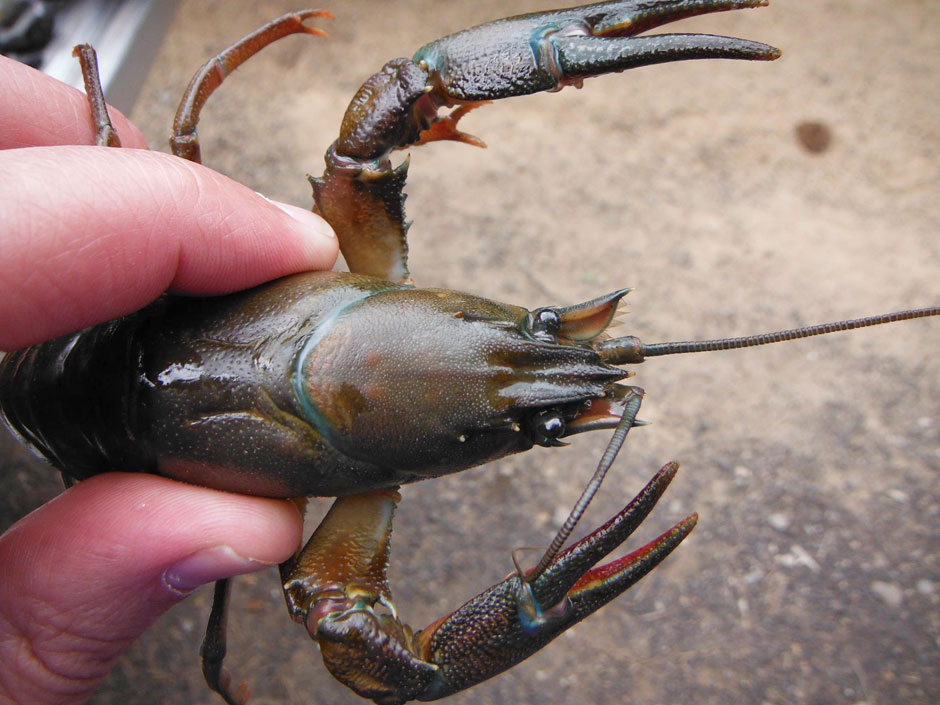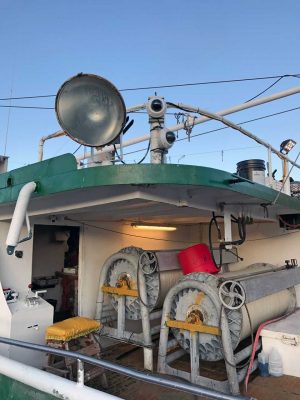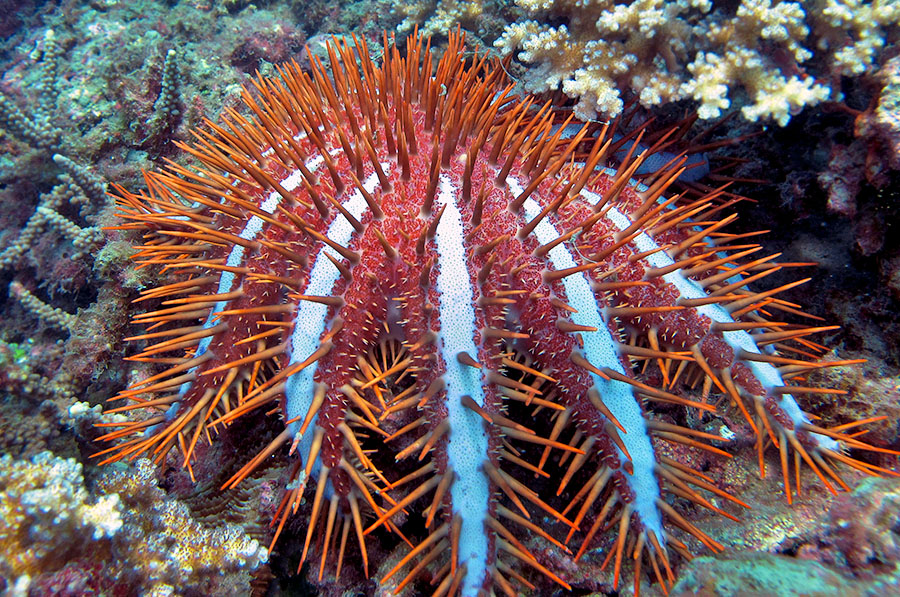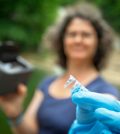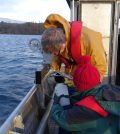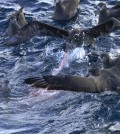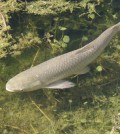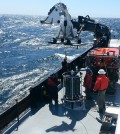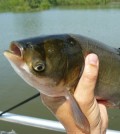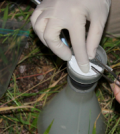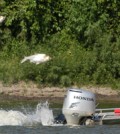Posts for tag "eDNA"
Monitoring and Facilitating Habitat Restoration Efforts in the Great Lakes
While human infrastructure, urbanization, and industrialization have advanced human societies, the natural environment has suffered due to constructed impediments and deteriorating architecture. In order to combat this degradation, habitat restoration programs across the US work to remove...
- Posted January 27, 2025
America’s Elusive Crayfish and the eDNA that’s Finding Them
The eDNA method is growing and has helped researchers locate and manage different species of crayfish found around the country.
- Posted July 29, 2020
With Cameras and Artificial Intelligence, Fishing Vessels are Becoming Smarter
Fishermen are gradually getting more assistance from artificial intelligence and electronic monitoring cameras in their work.
- Posted March 18, 2020
Environmental DNA from Waterways Could Be a New Tool in Monitoring Feral Pigs
Feral swine cause major damage across the U. S., Environmental DNA could provide a much needed monitoring boost.
- Posted February 19, 2020
Fighting Invasive Crown-of-Thorns Sea Stars with eDna
Researchers from the Australian Institute of Marine Science are using eDNA to battle invasive Crown-of-thorns sea stars from eating the Great Barrier Reef.
- Posted March 5, 2019
eDNA Tests Swimmability in 90 Minutes or Less
A handheld qPCR thermocycler is allowing water quality testing for bacteria in 90 minutes or less, confirming whether water is swimmable.
- Posted October 22, 2018
Monitoring for Biodiversity with 1st Commercial eDNA Service in the UK
A commercial eDNA kit enables almost anyone, including citizen scientists, to monitor even rare aquatic species in a less intrusive, more effective way.
- Posted August 17, 2018
Environmental DNA Reveals Surprising Shark Diversity
A team of scientists proves that eDNA can be used to more effectively track the range of rare species of sharks in the ocean.
- Posted July 23, 2018
Metabarcoding Of eDNA Documents Lake Windermere Fish
The metabarcoding of eDNA technique goes a step further than typical eDNA approaches, as shown by a study on England’s Lake Windermere.
- Posted September 19, 2016
Scientists search for endangered Yangtze softshell turtle with eDNA
Researchers at Washington State University are using environmental DNA to help save the world’s largest freshwater turtle from extinction, according to a release from the school. Their study will focus on the Yangtze softshell, the world’s largest...
- Posted March 9, 2015
Genetic testing helped uncover a killer whale’s unusual victim
A NOAA Fisheries marine mammal survey turned to genetic sleuthing to identify the unusual victim of a killer whale attack
- Posted February 19, 2015
Canada supporting DNA-based biomonitoring for Oil Sands watersheds and more
Brand new DNA-based biomonitoring methods are emerging, thanks to the pioneering work of a collaboration of Canadian genetics researchers.
- Posted January 26, 2015
Michigan river shows no Asian carp eDNA after positive summer test
Environmental DNA sampling at the end of October found no trace of the invasive Asian carp on the lower Kalamazoo River, according to a release from the Michigan Department of Natural Resources. The announcement arrives shortly after...
- Posted November 10, 2014
Future of eDNA could bring easier, low-cost marine species monitoring
Scientists say that emerging eDNA sampling techniques could more efficiently locate and quantify threatened and endangered marine species.
- Posted July 21, 2014
Microbial analysis of Asian carp feces adds detail to eDNA sampling
Researchers from the University of Illinois are using microbial analysis to add more detail to eDNA sampling used to detect the presence of invasive Asian Carp, according to a Michigan Public Radio report. The team uses microbial...
- Posted November 4, 2013
University of Idaho researchers monitor amphibians with eDNA
When researchers from the University of Idaho set out to track amphibians, they ran into a problem.
- Posted December 11, 2012
Agencies on the lookout after Asian carp DNA found in Western Lake Erie
The Ohio Department of Natural Resources is actively searching for live Asian carp in Lake Erie and the Maumee River after water samples collected by state and federal agencies revealed Asian carp environmental DNA, according to an...
- Posted September 28, 2012


